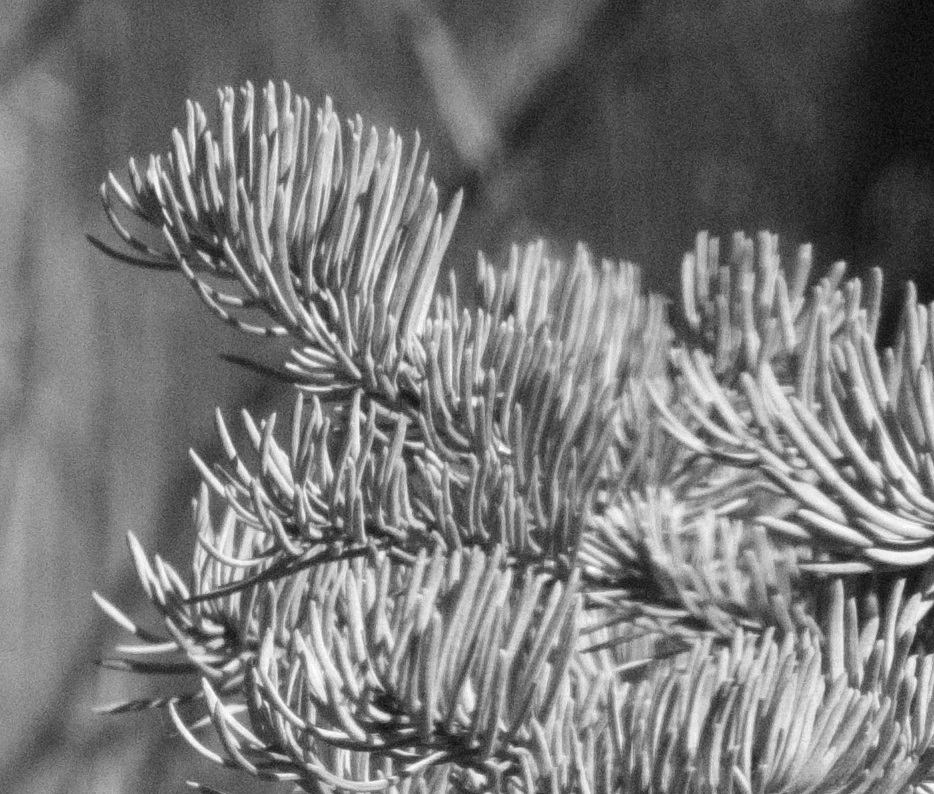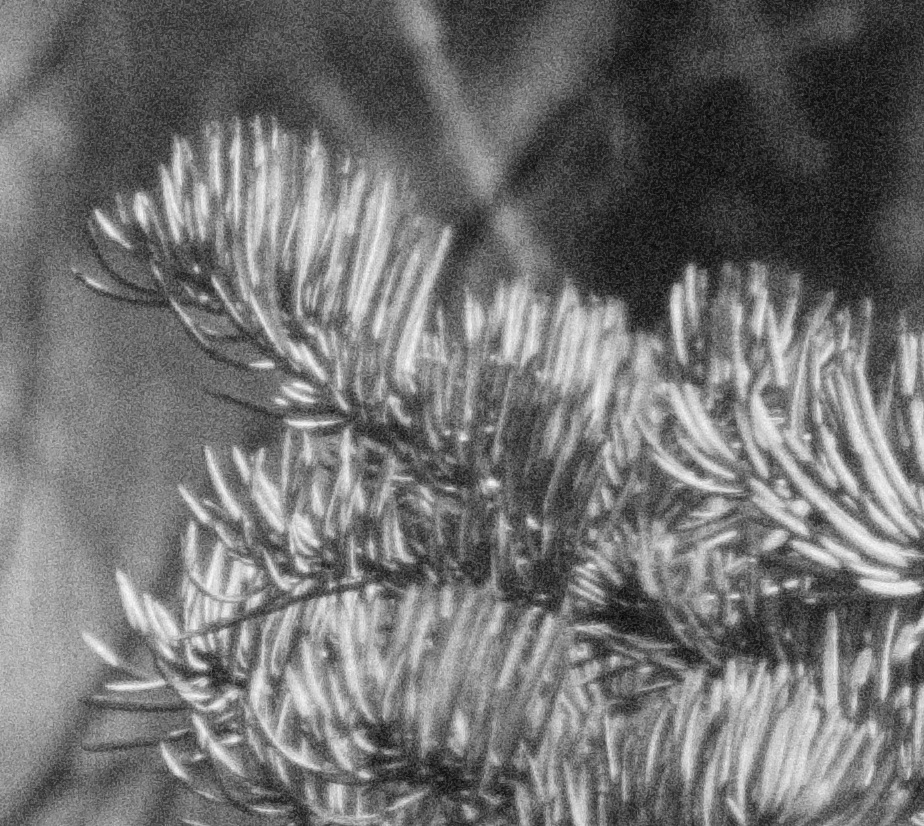I finally got the adapters to use a Teleskop-Express filter drawer with Baader Venus filter to test my copy of this lens, in particular the hypothesis that poor performance (that I had informally noted by holding a 48mm Baader Venus filter in front of the 122mm opening at the front of the lens in live view!) is due to chromatic aberration within the range of UV wavelengths that reach the sensor. Other aberrations could also be a factor, of course.
First, in visible light. Sony A6000 with Sachtler ENG 2 CF HD and Burzynski ballhead for support. ISO 1600, 1/1600 at f/11, electronic first curtain, 10-sec. timer, hands off entire assembly. Taken indoors looking through a single-pane window. Focused in magnified live view on the needles in the upper left. This is a crop of actual pixels from near the center of the image.
 Abies vis mono crop
Abies vis mono crop by
Bill de Jager, on Flickr
Next, in UV. Sony A6000 with Lifepixel broadband conversion and a Baader Venus filter. Same support, timer, and focus technique. ISO 1600, 1 second at f/11 to attempt to reduce aberrations.
 Abies UV mono crop
Abies UV mono crop by
Bill de Jager, on Flickr
Poor performance in the latter photo wasn't just a support issue compounded by a long exposure. It really did look that bad in live view, and no focus efforts on any subject in live view were satisfactory.
I reduced the second image to monochrome since I don't yet have a UV color profile for this camera. So the first image is also in monochrome to match. Due to the behavior of the die-based Bayer filters over the pixels, renditions of "color" in UV using standard sensors don't have the same direct mapping to wavelength that exists in visible light.
Conclusion: The lens should be tested with narrow-pass UV filters to see if better results can be obtained.
My copy is #410257. The subject is California red fir (
Abies magnifica).